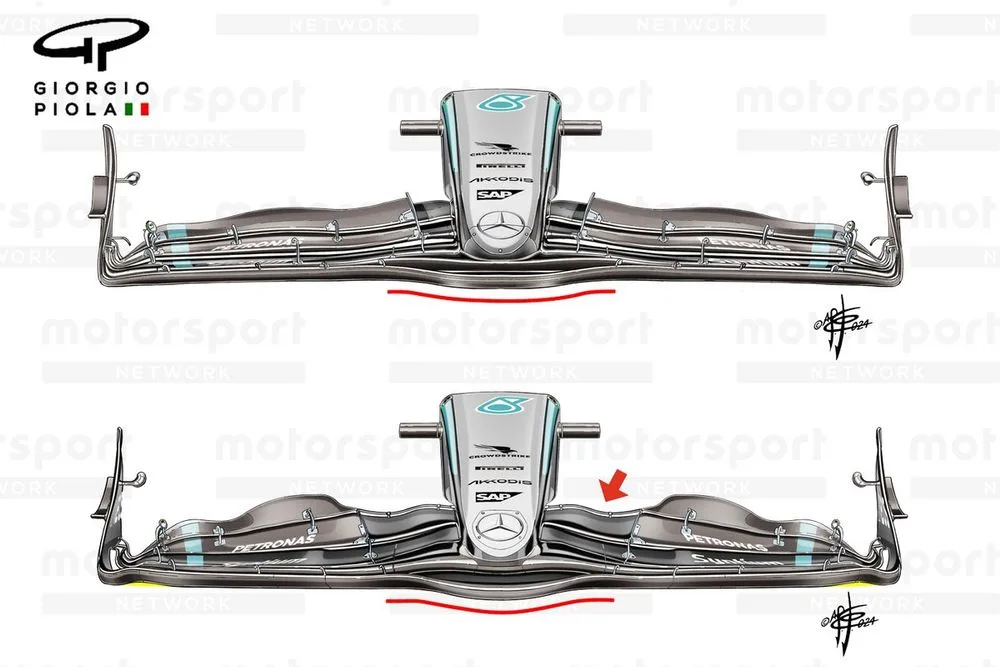The design is a clear philosophy departure from what the team started the season with, and points to a shift of approach as the German manufacturer aims to get its W15 performing better across a range of speeds.
Early-season analysis of the silver arrow highlighted that its performance profile was too narrow – it was either competitive in high-speed corners but then lacking at slower ones, or was the opposite in being good in low-speed turns but then suffering in quick curves.
As previously reported, the team’s trackside engineering director Andrew Shovlin had likened the squad’s situation to that of having too small a duvet – in that it covered either the toes or the head but not both.
The challenge for Mercedes has been in finding what is needed to make the duvet bigger – so its car works at all speed ranges.
As team boss Toto Wolff said: “Shov is great with metaphors, and what we are doing now is probably solving that. I don’t think that the duvet is large enough to cover feet and head at this stage, but we’re getting there.
“[The next race] in Montreal is a little bit of an outlier of a track, but we’re going to add something there, and we’re going to add something for Barcelona – to just try to chip away, bearing in mind there could be also setbacks.”
What has changed with the new wing
Mercedes W15 front wing Monaco GP comparison 059-24-MERCEDES-FRONT-WING-MONACO-COMPARISON
Photo by: Giorgio Piola
The new front wing design is a complete overhaul, with the novel upper flap design it introduced at the start of the season (red arrow) abandoned in favour of a full-span solution.
This has resulted in the inboard, non-moveable sections beside the nose being narrowed, whilst the adjustable section of the two upper flaps are now wider than before.
The biggest gain from this should be in providing the team with more versatility when setting up the car, which appears to be key in getting it to perform well across different speed ranges.
These changes have also resulted in the body and tip section of the nose being altered to suit, which also triggered a change in shape for the mainplane ahead.
This is best seen in the shape of the mainplane, as it is now a little flatter across the central span (see red line for comparison).
Meanwhile, the outboard section of the mainplane has also undergone some minor surgery, as the leading edge is no longer kinked in the outboard section (yellow highlight) and…
Click Here to Read the Full Original Article at Motorsport.com – Formula 1 – Stories…

